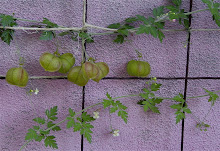


. . . . . . . . . . . . . . . . . . . . . . . . . . . . . . . . . . . . . . . . . . . . . . . . . . . . . . . . . . . . . . . . . . . . . . . . . . . . . . . . . . . . . . . . . . . . . . . . . . just plants








Taxonomy: Magnoliophyta (angiosperm), Magnoliopsida (dicot), Saururaceae Common names: lizard tail, yerba mansa |
Anemopsis californica, is also known as yerba mansa. Yerba, is spanish for herb and mansa is the feminine form of the spanish word manso meaning tame, tranquil or calm.
|



 The plant has a nice grassy leaf yet needs to be placed in an area that does not receive too much water because the bulb can become spread rapidly and become invasive - a flower box or smaller area will contain it as well. The seeds disperse but not very far.
The plant has a nice grassy leaf yet needs to be placed in an area that does not receive too much water because the bulb can become spread rapidly and become invasive - a flower box or smaller area will contain it as well. The seeds disperse but not very far.  My bulbs are planted in part shade, rocky sandy soil in areas that get mostly just rain water. I think in rich soil and with water this bulb could be a pest.
My bulbs are planted in part shade, rocky sandy soil in areas that get mostly just rain water. I think in rich soil and with water this bulb could be a pest.
